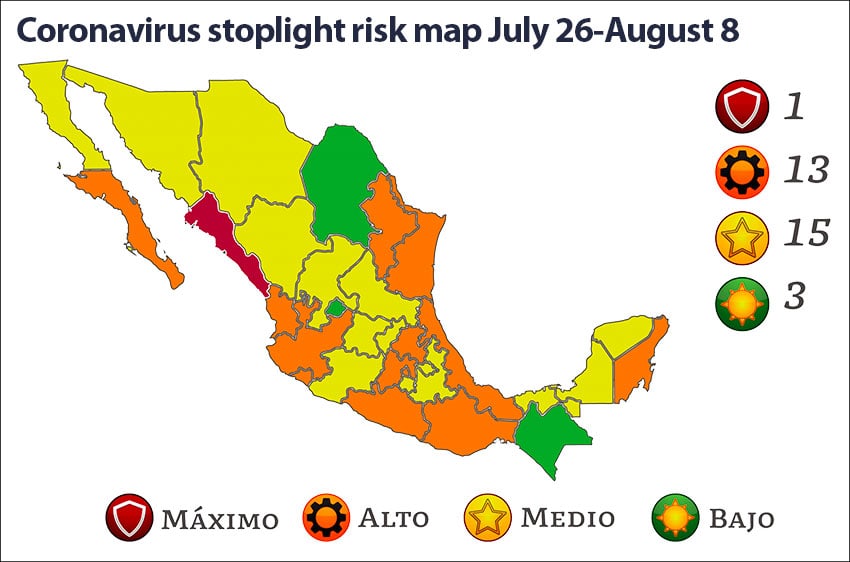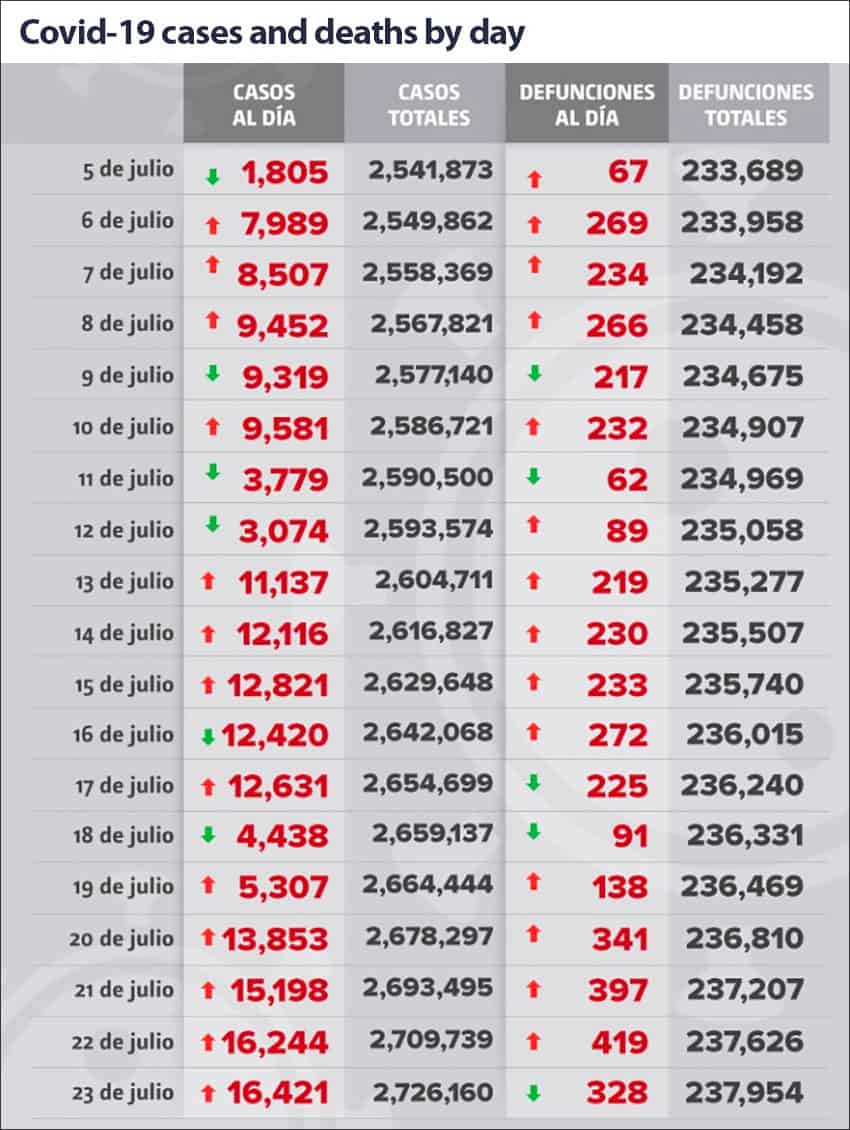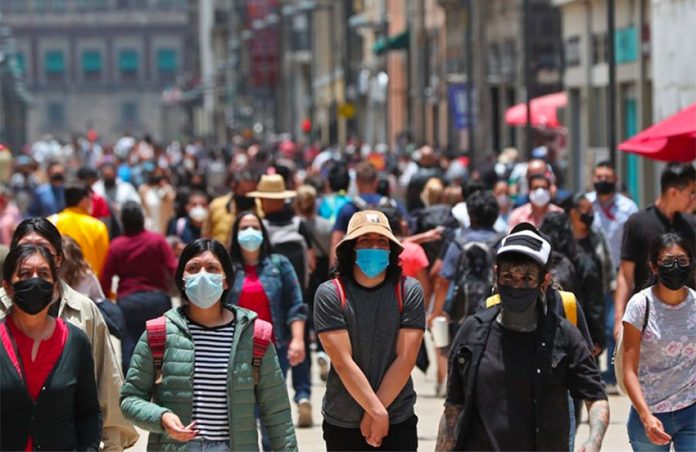Mexico City and México state will switch to high risk orange on the coronavirus stoplight map on Monday as the third wave of the pandemic continues to worsen.
Mexico City official Eduardo Clark said Friday that the capital will remain at the high risk level until at least August 1. México state Governor Alfredo del Mazo said that state will also be orange next week.
The two neighboring entities are among 13 states painted orange on the new federal stoplight map, published late on Friday afternoon. The other 11 orange states are Baja California Sur, Nuevo León, Tamaulipas, Nayarit, Jalisco, Colima, Veracruz, Hidalgo, Guerrero, Oaxaca and Quintana Roo.
There is one maximum risk red state – Sinaloa – and 15 are medium risk yellow: Baja California, Sonora, Chihuahua, Durango, Zacatecas, San Luis Potosí, Guanajuato, Querétaro, Michoacán, Puebla, Tlaxcala, Morelos, Tabasco, Campeche and Yucatán.
There are just three low risk green light states, a reduction of 16 compared to the previous map. They are Coahuila, Aguascalientes and Chiapas.

The new map will take effect Monday and remain in force until August 8, although states have the authority to set their own risk levels and coronavirus restrictions.
Mexico City remains the country’s coronavirus epicenter with approximately one third of the estimated active cases located there. The Health Ministry said Friday there are almost 108,000 estimated active cases, a sharp increase from just under 93,000 two days ago.
There are almost 3,400 hospitalized Covid patients in the metropolitan area of Mexico City, an increase of more than 800 compared to a week ago. Most recent cases in the capital are among young people, the majority of whom are not vaccinated.
Mayor Claudia Sheinbaum said that stricter restrictions won’t be imposed despite the shift to orange. But Del Mazo said that capacity levels at businesses will be reduced to 50% of normal levels in México state.
Many other parts of Mexico have also recently seen a steep rise in case numbers. Two of Mexico’s most popular beach destinations – Cancún and Los Cabos – have recorded surges.
According to the Bloomberg news agency, cases in Cancún have soared to a point where the Hard Rock hotel has allocated two floors for guests with symptoms of Covid-19.

Authorities in Baja California Sur, home to Los Cabos, are scrambling to add beds to hospitals to accommodate a growing number of patients.
Driven by widespread circulation of the highly contagious Delta variant, coronavirus case numbers have risen sharply this week.
The Health Ministry reported more than 16,000 new cases on Friday for a second consecutive day, more than 15,000 on Wednesday and almost 14,000 on Tuesday. The real number of new cases is likely much higher as the testing rate in Mexico remains low compared to many countries.
The accumulated case tally now stands at 2.72 million while the official Covid-19 death toll – also considered a vast undercount – is 237,954 with 328 additional fatalities reported on Friday. Deaths during the current wave of the virus have not reached the levels seen in the first two waves as the majority of older, more vulnerable Mexicans are vaccinated.
Nevertheless, health authorities reported 4,907 fatalities in the first 23 days of this month for an average of 213 pandemic deaths per day.
More than 58.2 million vaccine doses have been administered in Mexico since the national vaccination campaign began seven months ago, including a new record of 1.37 million on Thursday. More than 40% of the adult population has received at least one shot but most people in their 40s and 30s are still not fully vaccinated and most of those aged 29 and below – with the exception of residents of some northern border cities – have not yet had the opportunity to get a shot.
However, vaccination of people in the 18-29 age bracket will begin in Mexico City next week. Registration on the government’s vaccination website is open to all people above 18 no matter which part of the country they live in.
